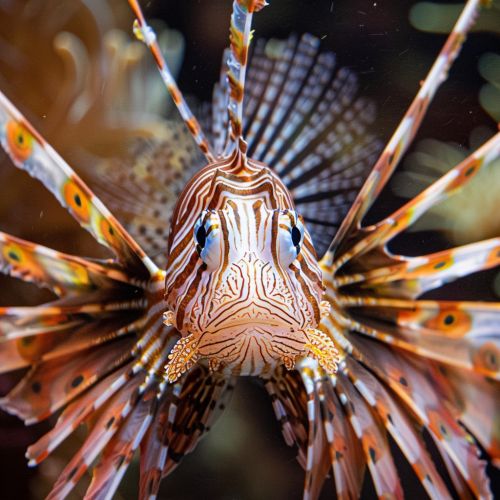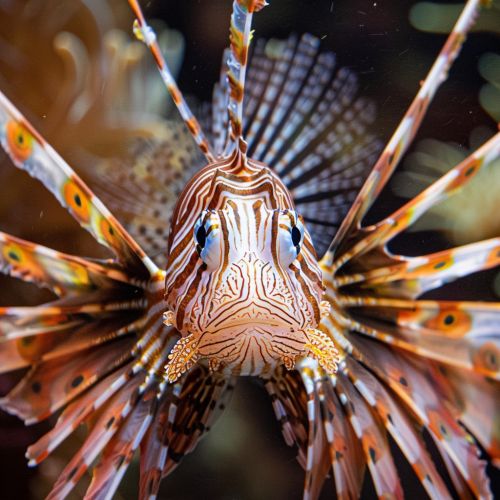Lionfish
Introduction
The lionfish, belonging to the genus Pterois, is a venomous marine fish native to the Indo-Pacific region. Known for its striking appearance and venomous spines, the lionfish has become a significant subject of study due to its ecological impact, particularly as an invasive species in the Atlantic Ocean. This article delves into the biology, behavior, ecological impact, and management of lionfish, providing a comprehensive understanding of this fascinating yet problematic species.
Taxonomy and Classification
Lionfish are part of the Scorpaenidae family, which includes scorpionfish and stonefish. The genus Pterois comprises several species, with Pterois volitans and Pterois miles being the most recognized. These species are often collectively referred to as lionfish due to their similar morphology and behavior.
Morphology and Identification
Lionfish are easily identifiable by their elongated, venomous dorsal spines and pectoral fins, which are often vividly colored with red, white, and black bands. They possess a laterally compressed body and can grow up to 38 cm in length. The venom, delivered through their spines, is a potent mix of proteins that can cause extreme pain, nausea, and in rare cases, fatalities in humans.


Habitat and Distribution
Originally native to the Indo-Pacific, lionfish inhabit coral reefs, rocky crevices, and lagoons. They are highly adaptable and can be found at depths ranging from shallow waters to over 300 meters. Their invasive range now includes the Western Atlantic, Caribbean Sea, and the Gulf of Mexico, where they have established robust populations.
Behavior and Ecology
Lionfish are solitary and territorial predators, primarily active during twilight hours. They exhibit a unique hunting strategy, using their pectoral fins to corner prey, which includes small fish and invertebrates. This predatory behavior has significant implications for native marine ecosystems, as lionfish can drastically reduce the populations of juvenile fish and other small marine organisms.
Reproduction
Lionfish are prolific breeders, capable of reproducing year-round in warm waters. Females release egg masses that are fertilized externally by males. A single female can produce up to 2 million eggs per year, contributing to their rapid population growth in non-native regions.
Venom and Human Interaction
The venom of lionfish is primarily a defense mechanism against predators. It contains a mix of proteins, including neurotoxins and hemotoxins, which can cause severe pain, swelling, and systemic effects in humans. Treatment typically involves immersing the affected area in hot water to denature the venom proteins and seeking medical attention for severe reactions.
Ecological Impact
The introduction of lionfish to the Atlantic has had profound ecological consequences. As an apex predator, lionfish compete with native species for food and habitat, leading to declines in native fish populations. Their presence disrupts the balance of reef ecosystems, affecting biodiversity and the health of coral reefs.
Invasive Species Management
Efforts to control lionfish populations include targeted removal through spearfishing and organized culling events. Public awareness campaigns and the promotion of lionfish as a culinary delicacy are also strategies employed to mitigate their impact. Research into biological control methods, such as the use of native predators, is ongoing.
Conservation and Future Outlook
While lionfish pose a significant threat to non-native ecosystems, they are not considered endangered in their native range. Conservation efforts focus on managing their populations in invaded areas and protecting vulnerable marine habitats. Continued research and international cooperation are essential for effective management and mitigation of their impact.
